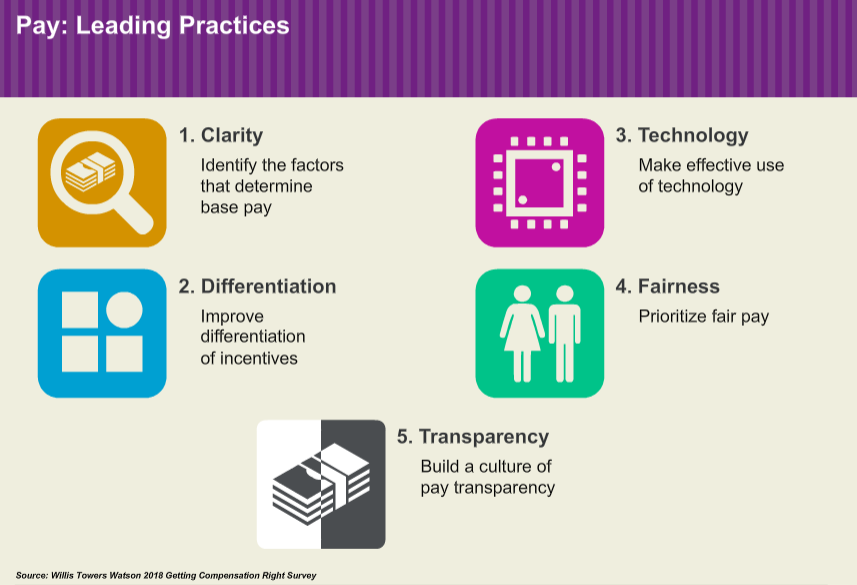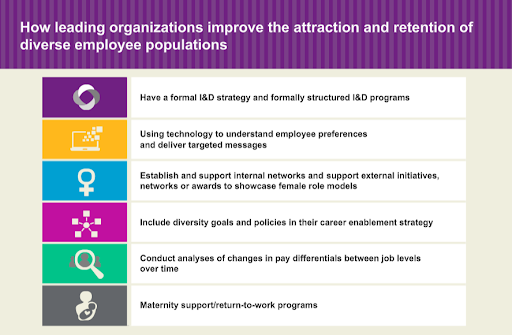 Cultivating a strong “talent experience” (which is essential to attracting and retaining workers) is a combination of culture, total value proposition and inclusion and diversity. (Photo: Shutterstock)
Cultivating a strong “talent experience” (which is essential to attracting and retaining workers) is a combination of culture, total value proposition and inclusion and diversity. (Photo: Shutterstock)
Remember when employees worked a standard 9-to-5 job, clocking out and checking out at the end of the day, fulfilling a prescribed set of functions to which their success and performance was tied? Perhaps there was also a clear path of promotion and expected incremental salary increases.
That's not how the modern workforce works. Today's work environment isn't a one-for-one exchange of production output for pay; it's about creating a labor force with the skills and fluidity to meet the business goals of the company. It's a much more complicated strategy, and the pay and benefits decisions to support that workforce have also gotten more complicated.
In a recent webinar, industry leaders from Willis Towers Watson explored the connection between “total rewards” packages, pay transparency and career development. “Our world is changing, work is changing, employee expectations are changing,” said Jacki Bassani, WTW's managing director of talent and rewards. “Organizations are placing a stronger emphasis on total rewards strategy.”
Cultivating a strong “talent experience” (which is essential to attracting and retaining workers) is a combination of culture, total value proposition and inclusion and diversity. If an employer is lacking in any of these areas, it's going to leave employees feeling undervalued and dissatisfied, and it's going to leave the employer at a talent-acquisition disadvantage.
Compensation that's fair and transparent
The biggest component of a rewards program, of course, is compensation. As more emphasis is put on pay transparency, aligning compensation strategies with company culture becomes more important, as well. “We have been witnessing a shift from market competitiveness to a greater emphasis on fairness and equability,” said Nancy Romanyshyn, director of talent rewards. “Employees have access to data, talk about what they earn and benchmark. Companies have to take control of the conversation. Greater transparency in pay leads to greater trust, better decisions and increased employee engagement.”
 Romanyshyn pointed to a number of technology tools that are available to track and benchmark pay, flagging areas where pay may not be equitable or fair. Such tools can also be used to track incentive and rewards programs and create transparency that allows employees to understand the how and why. “Demonstrating the fairness of your compensation program is integral to its effectiveness,” she said. “Make sure your employees understand how they are rewarded. Managers also need support and training to have these conversations.”
Romanyshyn pointed to a number of technology tools that are available to track and benchmark pay, flagging areas where pay may not be equitable or fair. Such tools can also be used to track incentive and rewards programs and create transparency that allows employees to understand the how and why. “Demonstrating the fairness of your compensation program is integral to its effectiveness,” she said. “Make sure your employees understand how they are rewarded. Managers also need support and training to have these conversations.”
Employees will not stay long at a company if they don't believe they're being paid fairly, or if the incentives for pay increases don't make sense. “When we really pull the players back, it's really about people understanding their pay,” Bassani added. “When they truly understand the give and the get, we do find that there are increased perspectives of satisfaction and engagement.”
Redefining career development and growth
Employees no longer see themselves as a cog in the company mechanics but as individuals contributing to its success. This shift is driven in large part by technology, which has increased consumers' expectation for a personalized experience. Thus, the traditional approach to training, development and promotions must also change.
“Employees also give career management pretty low marks,” Bassani said, citing lack of useful planning tools and opportunities to advance. “High-performing talent many think they need to leave the organization to advance their careers.”
The concept of career management needs to shift, Bassani said, emphasizing it should be “business-focused and talent-led.” What that means is less emphasis on defined roles and more emphasis on seeing how the employee fits into the big picture. “Imagine a world where you can search all internal talent not by role or function by but skills and experience. “What tools do you use to enable talent development? How do you bring visibility and transparency?”
She continued, “Now examine through the lens of inclusiveness and diversity. Is the experience the same for everyone? Do you want to differentiate, support different groups for different reasons? And is it fair?”
Diversity and inclusion: Conscious and deliberate
Developing a total rewards strategy that checks off all the boxes is daunting enough, but employers also need to make sure they're building in a deliberate focus on diversity and inclusion, both in the hiring process and the company culture. “We're still not seeing inclusion and diversity workforces at the higher levels,” Nancy said. “We know that many people still feel that they can't bring their whole selves to work.”
An intentional focus on diversity not only makes workers feel more accepted, but it allows a company to cast a wider hiring net–and reap greater rewards. “You need the top talent. To get that, you have to cast the widest net possible,” said WTW CEO John Haley. “If you only recruited from last names A through K, you'd be missing out on population, missing out on the talent pool.”

Haley and his team have gone to great lengths to create and nurture a strategy to increase diversity and inclusion. “We're holding leaders accountable for the pipeline of promotions and making sure we have the right development plans in place.”
It's not an overnight process, he stressed. “One of the things that struck me about our results isn't so much what we're doing today, but looking at projections of what our I&D will look like if we continue at the pace we're at today. Some of the things we were doing would lead to the results we were looking for and in other cases they weren't.”
How can HR pros consciously and deliberately expand their talent net? Romanyshyn gave the example of reaching out to people with disabilities, a largely untapped workforce in many cases. Employers can make steps to remove some barriers, such as creating programs to support individuals with disabilities, or be more open with the job description. “Really think about the job, what is core to the job, and how can you remove things that aren't as necessary to the job so that other people can come and do that job?” Romanyshyn suggested, adding, “Technology to me is a great enabler. It allows people to have access to jobs they perhaps didn't before.”
Thus, the alignment of benefits, compensation, culture and development–all under the umbrella of inclusiveness–contributes to an overall experience that will allow a company to recruit and retain the best talent. “When I&D efforts are successful, all colleagues feel like a valued part of the company,” Haley said. “It sends a message to employees: 'You matter.' A very powerful message.”
© 2025 ALM Global, LLC, All Rights Reserved. Request academic re-use from www.copyright.com. All other uses, submit a request to [email protected]. For more information visit Asset & Logo Licensing.








